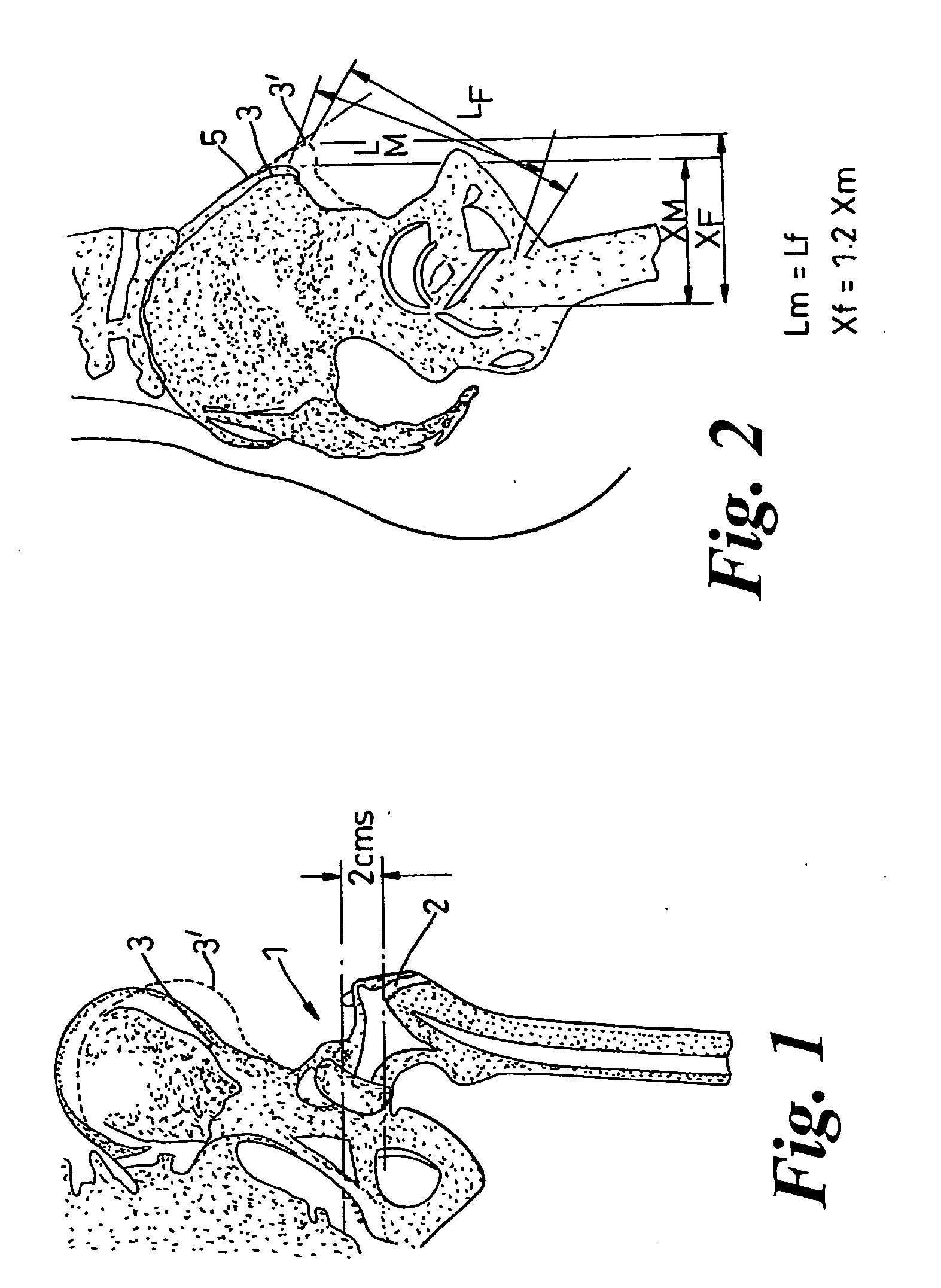Hip Protector
a technology for protecting pads and hips, applied in the field of hip protectors, can solve the problems of direct transmission of shear forces to this area of skin, inability inability to be in the correct position to protect the hip, so as to achieve the effect of effective protection of the hip and reduce the shear force on the skin
- Summary
- Abstract
- Description
- Claims
- Application Information
AI Technical Summary
Benefits of technology
Problems solved by technology
Method used
Image
Examples
Embodiment Construction
[0027]FIGS. 1 and 2 illustrate the part of the human skeleton including the hip 1. Hip protectors serve to protect the hip by dissipating energy away from the greater trochanter (GT) 1. In many individuals the GT 1 is very difficult locate by palpation. However, the anterior superior iliac crest 3 (for women and 3′ for men) is relatively easy to locate by palpation
[0028]The template 10 illustrated in FIG. 3 can be used on either left or right legs and includes a central window 11, which when the template is correctly positioned defines the protected area around the GT. The window 11 is rectangular and is approximately 4.5 cm high×5.5 cm wide. The template includes short edges 12 and 14, each inclined to a long edge 13. As can be seen from broken line 5 in FIG. 2, the iliac crest is inclined to the vertical
[0029]When the ASIC has been located by palpation, the template 10 is placed on the side of the leg (see FIG. 4) with the long edge 13 substantially vertical. If the template 10 is...
PUM
 Login to View More
Login to View More Abstract
Description
Claims
Application Information
 Login to View More
Login to View More - R&D
- Intellectual Property
- Life Sciences
- Materials
- Tech Scout
- Unparalleled Data Quality
- Higher Quality Content
- 60% Fewer Hallucinations
Browse by: Latest US Patents, China's latest patents, Technical Efficacy Thesaurus, Application Domain, Technology Topic, Popular Technical Reports.
© 2025 PatSnap. All rights reserved.Legal|Privacy policy|Modern Slavery Act Transparency Statement|Sitemap|About US| Contact US: help@patsnap.com



